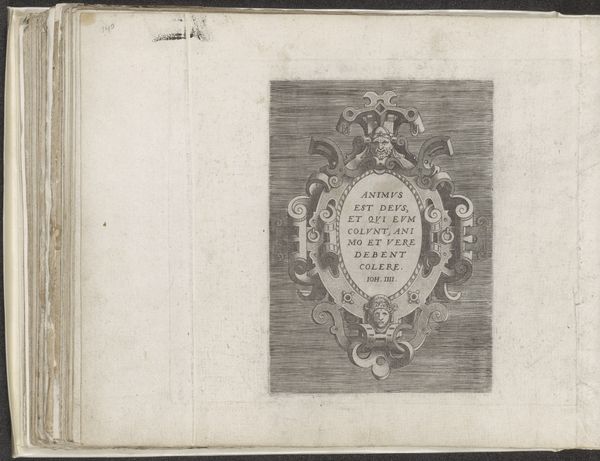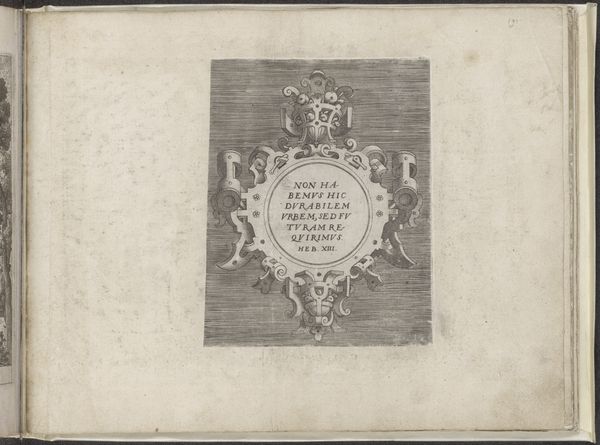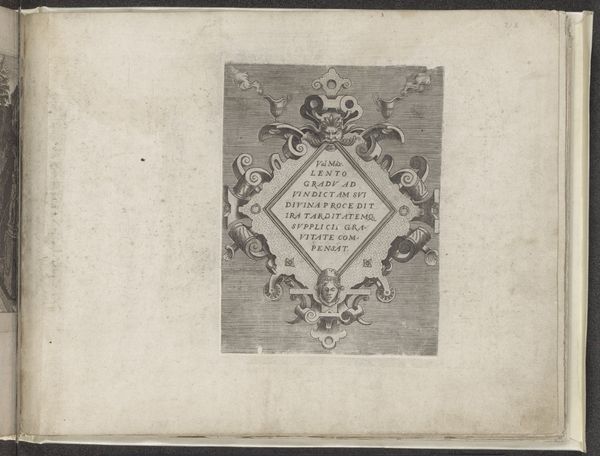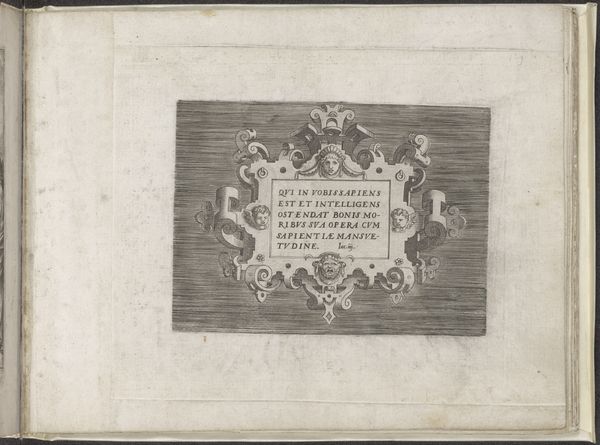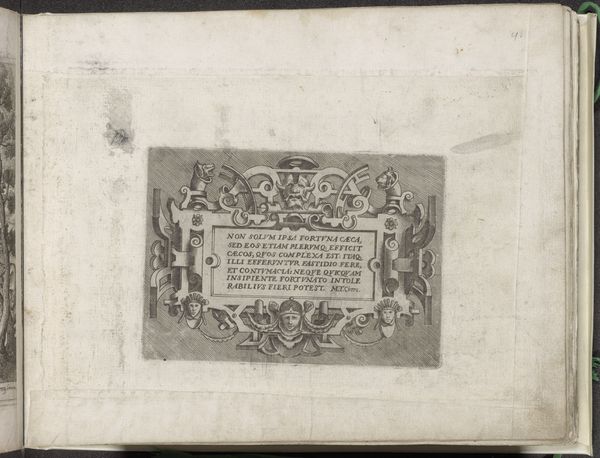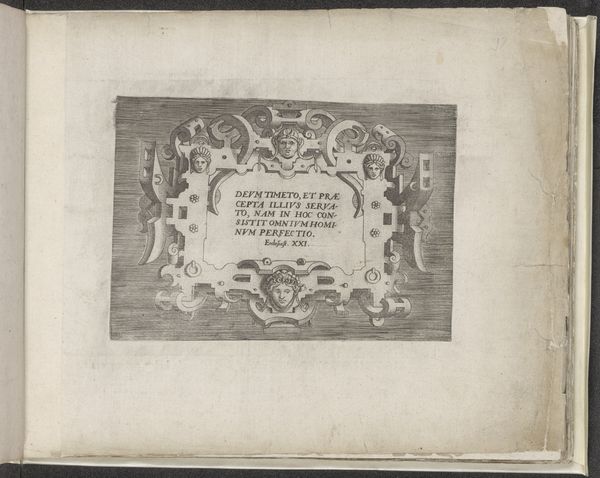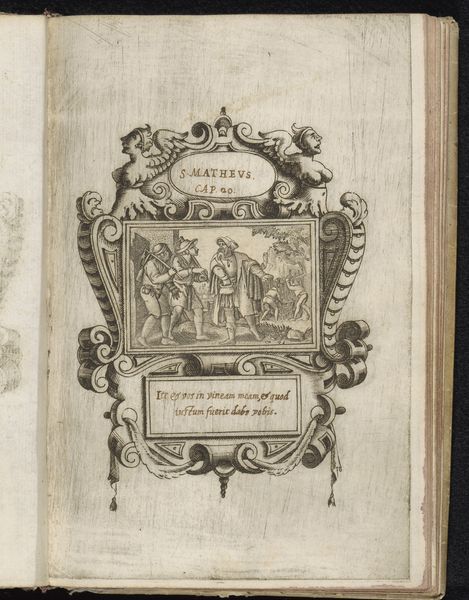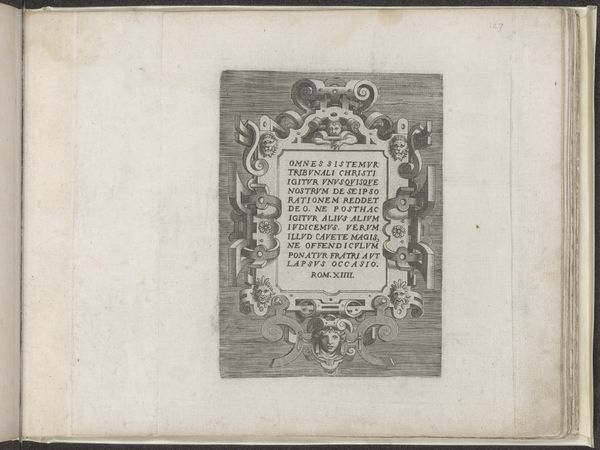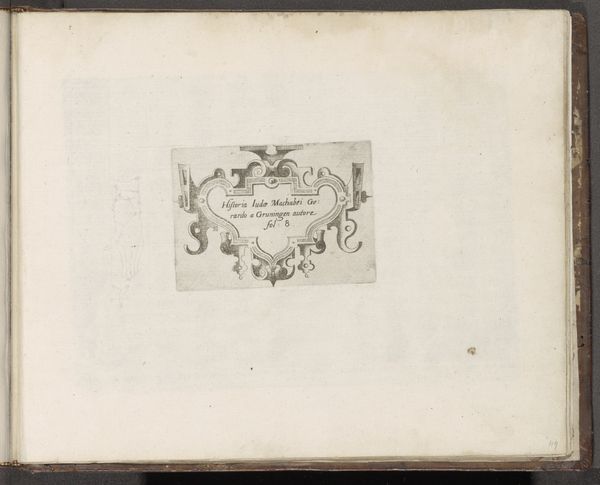
drawing, print, paper, ink, engraving
#
drawing
# print
#
mannerism
#
paper
#
ink
#
history-painting
#
engraving
Dimensions: height 192 mm, width 135 mm
Copyright: Rijks Museum: Open Domain
Curator: Let’s take a closer look at this engraving, "Cartouche met een tekst uit het Bijbelboek Wijsheid," created in 1555 by Frans Huys. The work is currently held at the Rijksmuseum. Editor: My first impression is the intricacy. The density of line work within that central oval immediately draws me in. It feels very compact and almost...oppressive? Curator: Oppressive? It's a powerful image, certainly. We should remember this work is part of a larger history, reflecting the complex politics of the 16th century. Images like these played a key role in disseminating religious and philosophical ideas. Editor: That's exactly where my mind goes, the means of production and distribution. Engravings were relatively easily reproduced; what's interesting to consider is who had access to them, and for what purposes these Biblical verses were used. Curator: Indeed. The text itself, taken from the Book of Wisdom, speaks of understanding God's power as the root of immortality. How might the viewing public in 1555 have interpreted such a message during a period of religious reformation and upheaval? Editor: We can consider this artwork to be a material product deeply shaped by these forces. Who commissioned the engraving? Where was it sold or displayed? What social rituals or traditions of devotion informed its creation and reception? Curator: Investigating Huys’ artistic choices is important as well. How does he blend classical and religious motifs, what models inspired the architectural framework for his lettered cartouche? Editor: Right! It's this blend of styles— the Mannerist flourishes surrounding the text—that would interest me as an example of art meeting material, reflecting social dynamics. You know, the printing process and access, or lack thereof. Curator: It is quite remarkable to see the intersections of religion, politics, and artistic production all coalesce into this small, yet potent image. Editor: Seeing art like this always pulls me to reflect on how visual culture has been and still remains crucial to maintaining various levels of political influence and belief.
Comments
No comments
Be the first to comment and join the conversation on the ultimate creative platform.
